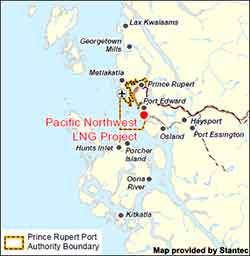The Harper government is stalling on requests for better earthquake preparation on Haida Gwaii, according to the NDP MP for Skeena Bulkley Valley, Nathan Cullen.
Speaking to northwest reporters on Thursday, February 28, Cullen who is NDP House Leader, said: “The government has been stalling since November when we’ve been asking them to meet the communities and meet their demands for funding, because as we see more earthquakes come, the support hasn’t been there from the federal government.”
The Skeena Bulkley Valley riding includes Haida Gwaii which was hit by a major 7.7 magnitude earthquake on October 27, 2012. Haida Gwaii and the northwest coast was shaken with numerous aftershocks through the rest of October and November. The most recent were 4.3 magnitude aftershock on February 24 and 4.5 magnitude aftershock on February 25.
On January 5, 2013, another 7.5 magnitude earthquake struck near Craig, Alaska. That quake was also felt throughout northwestern BC.
Both big quakes prompted tsunami warnings.
“The communities have done their work,” Cullen said. “We’ve given the government three months now. Earthquakes continue to still happen,
“Rather than shedding tears if something goes wrong, the government should fix the problems. We know exactly where the funding can be coordinated and effective particularly in Haida Gwaii, there’s been a lot of work done on behalf of their communities especially by their municipal leaders.
“The federal government simply has to say yes, to meet with them, to find some of those funding solutions. This is not rocket science.
“Maybe because there aren’t earthquakes in Ottawa, the Harper government doesn’t seem to think these things are a concern to people. But they are. And let’s not wait until a tragedy happens before we start to make some moves.”
Cullen noted that the federal government had recently budgeted $680,000 for new LED lights for the communities on Haida Gwaii.
“I am not going to speak against the need to put LED lights in but’s obvious that the federal government’s priorities are not aligned with what’s actually needed on the ground. People have been calling for this for years. We’ve seen tsunami warnings before. And there’s some good and reasonable fixes.
“The role of the federal government emergency preparedness requires this,” Cullen said, but then he added that, “Now one thing to keep in mind is that this federal conservative government wants to get out of anything to do with emergency readiness and response,” pointing to cutbacks in the budget for First Nations police forces.
Unmentioned at the news conference was that likely also includes the Coast Guard cutbacks on the west including, including the highly unpopular and controversial closing of the Kitsalano Coast Guard base in Vancouver
Cullen said he was hoping to meet with the cabinet ministers responsible to get more action on earthquake readiness on Haida Gwaii.
Related:
After the earthquake: Kitimat must immediately upgrade its emergency communications
Oct. 28, 2012
The tsunami, Twitter and the Zones: Did social media amplify government generated confusion?
Nov. 4. 2012
DFO study on ancient Douglas Channel tsunamis shows minimal impact on Kitimat, devastation at Hartley Bay
Nov. 17, 2012


